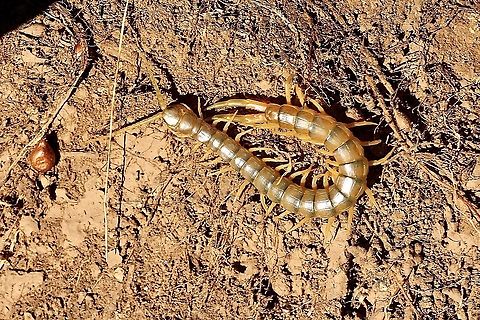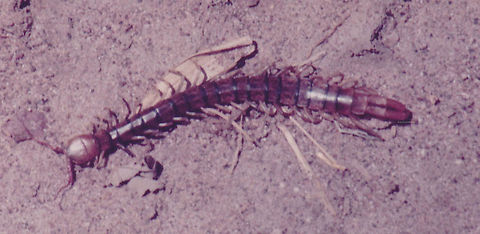
Habitat
It is found in both dry and moist habitats, usually in sheltered places such as under logs, leaf litter and bark, and under rocks. It is solitary, terrestrial and a nocturnal predator. It is common throughout Australia, the Solomon Islands, New Guinea, Indonesia, Southeast Asia and China.The giant centipede has modified claws called forcipules which curve around its head and can deliver venom into its prey. The venom is toxic to both mammals and insects, but does not appear to be strong enough to kill large animals quickly. It can cause severe pain in humans which can last for several days but which can be relieved somewhat by the application of icepacks. Some people report "intense pain", while others claim it is no worse than a wasp sting. There has been at least one reported death from the related centipede species ''Scolopendra subspinipes'' in which a young girl was bitten and died.
References:
Some text fragments are auto parsed from Wikipedia.
